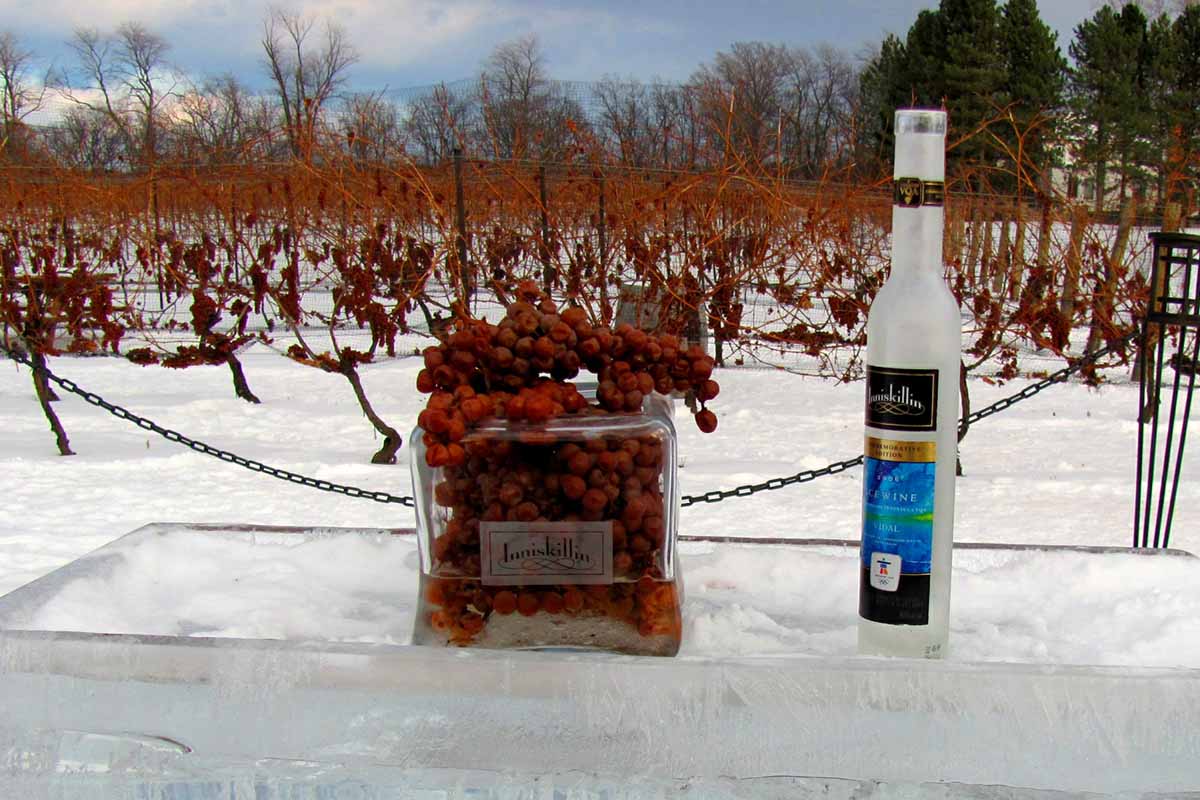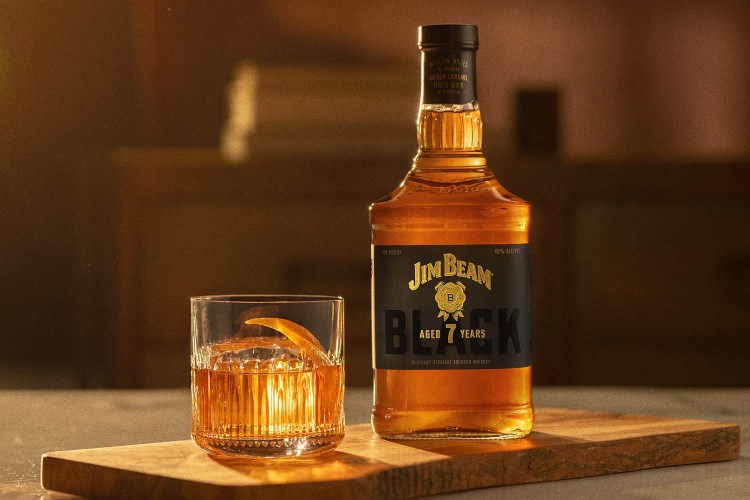Climate change is bringing unwelcome alterations to the way we live, but its impact on the production of ice wine is among the more obscure. “I even think the next 10 years will see the industry having to adjust regulations to refine the terms as to what makes ice wine ‘icewine,’” reckons Faith Nicol, retail and operations manager for Peller Estates in Niagara, Canada, as she prepares for harvesting this January. “Recent years have definitely seen lower harvests and shifts that will change the nature of the wine. Warmer winters make a real difference.”
The idea that ice wine, or “icewine” — it’s all one word for the real thing — may be endangered perhaps only occurs to the bon viveurs of the world. Indeed, even dedicated oenophiles are often not sure entirely what ice wine is. If wine is typically associated with the sunnier climes of France, Italy, California or Australia, ice wine is a product of those few parts of the world where temperature extremes — very warm summers but also cold winters — are the norm. Thanks to cold fronts coming down from the Arctic and hot ones rising from the Gulf of Mexico, Niagara has just that unusual micro-climate.
And that’s very, very cold winters, with harvesting and immediate pressing only occurring if an estate gets at least four days of minus eight degrees centigrade, but not, ideally, colder than minus 10 (in a region that may see much colder nights).
Why harvest in such brutal conditions? Because it’s then that the water content in each grape is effectively forced out by the cold to leave just the tiniest drop of what in the trade they call “nectar.” The colder it is, the more water freezes as a percentage of sugar. And it’s the resulting super-concentrate that is used to make ice wine. “And that makes changes in the climate a problem,” Nicol says. “Because warmer winters mean that more water remains in the grape, so the juice is less concentrated. Frankly, ice wine is going to become an increasingly rare product.”

And that’s a shame because it’s delicious — typically sweet, akin to more everyday dessert wine, but still with acidity and not as cloying or syrupy (in part from spending between six and 10 months in French oak barrels). It’s delicious but expensive. Only around 1ml of liquid is achievable from around 10 grapes, which is why the same number of grapes that would give you a bottle of ice wine — you need around 3kg worth — would give you something closer to seven bottles of more conventional table wine. Proper ice wine —check out the likes of Hunt Country or Iniskillin — is sold in bottles about a third of the size of a typical wine bottle, but at two or three times the price.
The Niagara region produces around 90% of the world’s ‘icewine’, a designation controlee akin to that applied to Champagne or Scotch whisky which stipulates the grapes must be picked frozen on the vine. But there are other ice wines. Indeed, China — which has gone nuts for icewine and is now the world’s biggest importer of icewines from Canada — has recently begun to produce its own. But with many of these and others around the world, the grapes are frozen mechanically, so they don’t count (at least not among connoisseurs). That ruling “stops the market being open to knock-offs and keeps the product pure,” as Nicol puts it, “and the ‘wine police’ are quick to stop any inappropriate use of the terminology.”
“But, you know, icewine is produced on such a small scale [relative to table wine], so much of it is drunk by the domestic market here and Canadian laws have long made it hard to export alcohol, so it’s really not well known internationally,” Nicol adds. “And even Canadians come to us and have no idea about what icewine is.”
How Bats in Bordeaux Are Sustainably Saving Wine
It’s part of a larger plan to eradicate pesticides and invasive mothsCertainly, the challenges to production are many, climate aside. The grapes have to be laboriously netted to prevent local wildlife from eating them for their winter dessert. Yields are low. You also need specialist yeasts to bring on fermentation and, prior to that, specialist equipment that can harvest on frozen ground and through snow. That harvesting has to be done at exactly the right time, so you need an army of labor ready to spring into action at short notice — and, remarkably, locals tend to volunteer for the pleasure of picking in the middle of the night at minus 10. No wonder there’s not much icewine around.
But the popularity of icewine is something of a chicken and egg situation, concedes Paul Speck, president and co-owner of the Niagara independent winery Henry of Pelham. Not many people know about icewine, and, given that it’s hard and expensive to make, the incentive for wineries to do so is somewhat diminished. “The fact is that table wine is just easier to sell relative to the small market for icewine. Not many people drink high-end desert wine [like this],” he says. “Even though it offers the kind of experience you don’t always expect from wine because it’s just so full of flavor.”
That’s proven useful to Henry of Pelham, as being a producer of a world-class product helps to generate interest in its other, more conventional wines. “People don’t think of Canada being a home to wine so much as snow, Mounties and Eskimos,” he laughs. “Yes icewine is in short supply, which means it’s something you’re not going to have regularly, but really the fact that icewine is made at all comes down to it being such a special drink. It has a complexity and richness and long length on the palate that makes it unique.”
Even those other icewine-producing nations with the right temperature variance — Germany and Austria, notably, with their eiswein, or the far northeastern Liaoning region of China — don’t have quite the same extremes, which arguably makes their product less elegant, rich and complex (though no less expensive). And that brings us back to the impact of climate change on the producers in Niagara. An optimistic Speck says it’s yet to be seen whether less predictable seasons will have a deleterious impact on icewine harvests. Nevertheless, surely, he must be putting a few bottles aside for himself. You should too.
Join America's Fastest Growing Spirits Newsletter THE SPILL. Unlock all the reviews, recipes and revelry — and get 15% off award-winning La Tierra de Acre Mezcal.
























